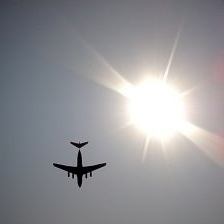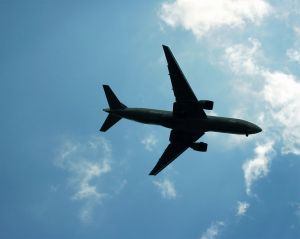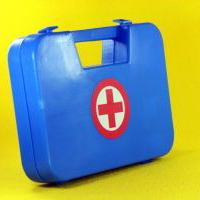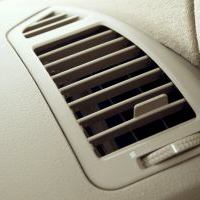 A lawsuit by a former flight attendant who claims that toxic fumes on airplanes made her chronically ill has focused attention on the question of whether cabin air is indeed safe for both passengers and flight crew.
A lawsuit by a former flight attendant who claims that toxic fumes on airplanes made her chronically ill has focused attention on the question of whether cabin air is indeed safe for both passengers and flight crew.
Terry Williams, 40, who worked for American Airlines for 17 years, is suing Boeing because she alleges that a design flaw in the company’s MD-82 aircraft allowed toxic fumes to leak into the cabin, making her sick.
So will her case hold up? And what does it mean for frequent fliers, airline employees and everyday airline passengers?
Williams says that she has suffered chronic migraines, balance and vision problems, arm tremors, pain in her feet and memory loss since a so-called “fume event” in April 2007 in which she inhaled air that looked like a “misty haze of smoke” on flight to Dallas, Texas.
She alleges that powerful chemicals such as tricresyl phosphate (TCP) were allegedly pumped into the cabin with the so-called “bleed air” that is normally used to provide air for passengers.
Get The Facts on Infectious Disease and Air Travel. or find out The Travel Detective’s Advice on Swine Flu and Travel.
Air in passenger cabins is typically a 50-50 combination of recirculated air and bleed air, which comes off the engines and is cooled and compressed before being pumped into the plane. Williams claims that faulty seals in the Boeing jet engines allowed the chemical to mix with the bleed air and contaminate the cabin.
 American Airlines declined to publicly comment on the lawsuit. A Boeing spokesman only said that “the potential for bleed air contamination has been known through the aviation industry for many years,” but denied responsibility for Terry Williams’ illness.
American Airlines declined to publicly comment on the lawsuit. A Boeing spokesman only said that “the potential for bleed air contamination has been known through the aviation industry for many years,” but denied responsibility for Terry Williams’ illness.
To get to the bottom of the matter, scientists in both the U.S. and the UK have been studying these fume events to find out what effects, if any, these chemicals may have on flight crew personnel.
Researchers at the University of Washington are currently analyzing blood samples from 92 people who suffer from symptoms similar to Williams, most of whom work on board aircraft. And a neuropsychologist at University College London is testing 27 British pilots who also have a strange assortment of symptoms.
Both are curious to see if there is a correlation between the subjects’ symptoms and chemicals such as TCP and other breakdown products of hydraulic fluid, fuel, deicing fluid and engine oil. Many of these chemicals are known to be toxic nerve agents.
More related links:
The results of their research, which should be ready in just a few months, could confirm concerns within the airline industry about exposure to fumes. These concerns have been raised for years, but not widely publicized—possibly due to fear of adverse public reaction.
 For example, as far back as 1986 the National Research Council (NRC) conducted an independent study which raised many concerns about air quality in cabins. The NRC conducted more research in 2002, which found that on one model of a Canadian airline nearly four out of 1,000 flights had a fume event. A similar British study found fume events in 1 of every 2,000 flights.
For example, as far back as 1986 the National Research Council (NRC) conducted an independent study which raised many concerns about air quality in cabins. The NRC conducted more research in 2002, which found that on one model of a Canadian airline nearly four out of 1,000 flights had a fume event. A similar British study found fume events in 1 of every 2,000 flights.
The FAA’s response to these studies has been somewhat tepid. The agency has said in the past that airlines could not guarantee that passenger and crew were protected from contamination “because no airplane design incorporates an air contaminant monitoring system.”
The FAA spokesman added that the agency “supports all of the NRC’s recommendations and continues to monitor the development of data on cabin air contamination to ensure the health of the flying public.”
This is not enough for some in the industry, many of whom, frustrated by the airlines’ seeming lack of interest in the issue, have started to make waves to push airlines to address it.
A spokesman for the Association of Flight Attendants (AFA), which represents 46,000 flight attendants at 26 airlines, said that the airlines need to start taking action because enough research has been done to show a connection between fumes and illness.
 An industrial hygienist with AFA said that hundreds of flight attendants become ill every year from fumes, but most just file workers’ compensation claims and stay quiet about the issue for fear of losing their jobs.
An industrial hygienist with AFA said that hundreds of flight attendants become ill every year from fumes, but most just file workers’ compensation claims and stay quiet about the issue for fear of losing their jobs.
A British pilot named Tristan Loraine, who retired after claming that toxic air made him sick, has committed his concerns to celluloid. He recently made a documentary film titled “Welcome Aboard Toxic Airlines,” which alleges that the airline industry put profits before passenger safety.
And Terry Williams is not the only person to sue airlines because of bad cabin air. Two sisters are suing Southwest because they say they were sickened on a Southwest flight in January, and a Chicago attorney is representing 20 people who say they became ill after a charter flight to Orlando two years ago.
Learn more about healthy travel in our Travel Health & Fitness section.
One thing that may hamper the success of these lawsuits is that fact that fume events seem to have varying effects on people. Some highly sensitive individuals may get severely ill after a single exposure, while others on the same flight may have no symptoms at all.
Experts say that may be due to the individual variation in people’s immune systems and enzyme levels, as well as other factors such as what medications they are taking. Others note that the same symptoms can occur as a result of other neurological conditions, which makes it hard to prove a cause-and-effect connection with airline fume exposure.
Two recent developments may signal the beginning a change for U.S. airlines. Legislation currently making its way through Congress requires the FAA to initiate research and development on effective air cleaning and sensor technology for bleed air supplied to the passenger cabin.
The bill, known as the FAA Reauthorization Act of 2009, recently passed in the House and is now in a Senate committee.
Boeing, for its part, seems to be trying to deflect attention from the MD-82 by focusing on the safer soon-to-be-launched 787 Dreamliner, which uses compressed atmospheric air from outside the plane instead of bleed air.
By Karen Elowitt for PeterGreenberg.com.
Related links: CNN, Seattle Post-Intelligencer, AvioNews.com, CNN, Govtrack.us
More related links:












